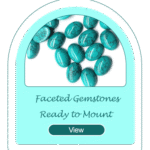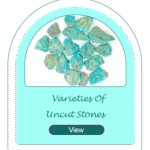Mag
Neyshabur Turquoise
Introduction
Often hailed as the king of all turquoise varieties, Neyshabur Turquoise (also known as Nishapur or Persian Turquoise) holds a legendary status in the world of gemstones. Sourced from the ancient mines near the city of Neyshabur in the Razavi Khorasan province of Iran, this stone is synonymous with unparalleled quality, rich history, and a stunning color palette that sets the global benchmark for excellence. For over 5,000 years, this precious stone, known locally as Firoozeh, has captivated kings, adorned mosques, and served as a powerful cultural symbol across the Middle East and Asia.
The enduring fascination with Neyshabur turquoise is not merely romantic; it is rooted in geological superiority and meticulous historical stewardship. Unlike many modern mining operations that yield stones requiring significant enhancement, the historical output from Neyshabur has consistently provided material of such inherent beauty that it often required little more than careful cutting and polishing to reveal its magnificence. This consistency in high quality has allowed the name “Persian Turquoise” to become synonymous with the ideal standard for this mineral across the international gem trade.
The Geological Masterpiece: Why Neyshabur is Unique
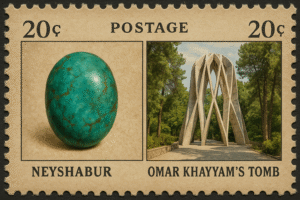
The quality of Neyshabur turquoise stems directly from its unique geological formation. Turquoise is chemically defined as a hydrated copper aluminum phosphate mineral, typically represented by the formula:
[ \text{CuAl}_6(\text{PO}_4)_4(\text{OH})_8 \cdot 4\text{H}_2\text{O} ]
The exceptional color found in the Neyshabur mines is largely due to the precise concentration of copper ($\text{Cu}^{2+}$ ions) substituting for aluminum within the crystal lattice structure. This substitution is critical; too little copper results in a greenish hue, while the optimal concentration produces the highly sought-after, clear “Robin’s Egg Blue” or sky-blue color.
Factors Contributing to Superiority
The matrix, or the host rock material intertwined with the turquoise, significantly affects its aesthetic appeal and market value.
- Purity of Color (Aabi): The stone exhibits a pure, vibrant blue (“Aabi”) that is highly saturated and consistent. This high saturation is achieved because the host rock matrix in the Neyshabur deposits is predominantly light-colored or non-existent (limonite or kaolin), leading to the desirable matrix-free appearance. In contrast, turquoise from regions like Nevada often forms within black or brown limonite or sandstone matrices, resulting in prominent spider-webbing. The Aabi quality represents the pinnacle of this blue saturation.
- Hardness and Density: Neyshabur stones generally possess higher density and hardness than many other sources, frequently registering between 5.5 and 6.5 on the Mohs scale, with some exceptional specimens reaching 7. This increased density makes them more durable, less porous, and results in a superior polish that enhances their vitreous luster. The stability of the mineral structure minimizes water absorption.
- Stability and Porosity: High-quality Neyshabur turquoise requires minimal or no stabilization treatments, maintaining its color and integrity naturally. The primary concern with lower-quality turquoise is its porosity, which allows it to absorb oils, dust, and moisture, causing color change (often turning greenish). The dense nature of the Firoozeh from Iran resists this degradation, ensuring the stone retains its initial vibrant blue hue indefinitely when properly cared for.
The Formation Environment
The turquoise deposits at Neyshabur are typically found in altered volcanic and intrusive igneous rocks, specifically in veins and nodules within altered andesites and rhyolites. The hydrothermal alteration process necessary for turquoise deposition requires specific environmental conditions—the presence of copper-rich solutions interacting with aluminum-bearing minerals in the presence of phosphorus—conditions perfectly met by the ancient geological setting around Mount Binalud, where the mines are located.
A Legacy Etched in History and Culture
The history of the Neyshabur mine is inextricably linked to the history of Iran and the Silk Road. It is arguably one of the oldest known turquoise mines still in operation globally, with evidence suggesting active mining dating back to at least 2,500 BCE.
- Ancient Trade Routes: Persian turquoise was traded extensively through ancient routes, profoundly influencing jewelry design and spiritual beliefs from the Mediterranean world to Europe, India, and China. Its recognized value meant it was often used as a form of currency or high-status exchange. The term “Turquoise” itself derives from the French pierre turque (Turkish stone), as it was typically brought into Europe via Turkish intermediaries along the Silk Road.
- Architectural Adornment: The stunning blue color is prominently featured in classical Persian and Islamic architecture, notably in the domes and minarets of mosques and madrasas, symbolizing heaven, purity, and the divine. The color provided a vibrant contrast against the desert landscape and the rich geometry of Islamic art. The famed Shah Mosque (Imam Mosque) in Isfahan, while constructed centuries later than the initial peak of Neyshabur mining, uses the architectural standard set by the quality of Persian turquoise to achieve its breathtaking azure domes.
- Talismanic Power and Iconography: Across Persian culture, Firoozeh is revered as a powerful talisman. It was believed to attract wealth, bring good fortune, and offer potent protection against the evil eye (nazar). Lore suggests that if the stone’s blue color faded, it was a warning to the wearer that they were in danger or about to suffer misfortune. Furthermore, the tradition often dictated that a piece of turquoise should always be placed atop the roof of a new building to ensure its stability and the good fortune of its inhabitants.
Deeper Classification: Shajari and Charkhi
While the global market focuses heavily on pure blue, the traditional Iranian classification system provides a nuanced view of the material based on its matrix structure:
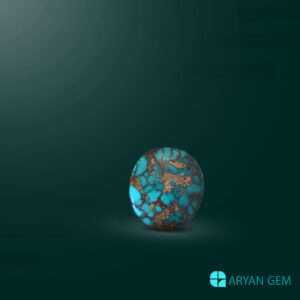
- Shajari (or Sangee): This term denotes turquoise that has a matrix, but the matrix forms intricate, fine lines resembling branches or veins. The most prized Shajari stones exhibit a fine, web-like pattern, often in dark brown or black, contrasting sharply with a vibrant blue body color. The pattern must be delicate and non-invasive to the overall color impact.
- Charkhi (or “Wheel-like”): This term is sometimes used to describe stones that have a swirling or circular pattern in the matrix, or sometimes, more loosely, stones with a very slight, subtle matrix that doesn’t obscure the color significantly. In modern contexts, it can sometimes be used broadly for stones that are not purely blue but still possess fine matrix characteristics.
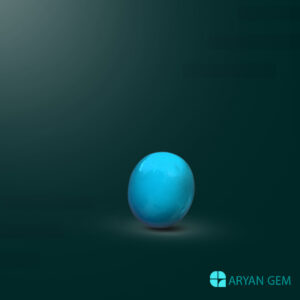
- Aabi (Pure Blue): The most coveted classification, referring to stones that are essentially matrix-free, exhibiting only the pure, intense blue color derived solely from the copper content. These command the highest prices per carat.
SEO Keywords and Market Value Analysis
For effective search engine optimization (SEO), targeting high-intent, descriptive keywords is paramount for this specific gemstone:
Primary Keywords: “Neyshabur Turquoise,” “Persian Turquoise,” “Iranian Firoozeh.”
Secondary Keywords: “World’s Best Turquoise,” “Robin’s Egg Blue Turquoise,” “Untreated Persian Turquoise,” “Neyshabur Mine.” Long-Tail Keywords: “High-quality matrix-free turquoise,” “Investment grade Iranian turquoise jewelry.”
Market Valuation Dynamics

In the global gem market, untreated, high-grade Neyshabur turquoise commands premium prices, often comparable to high-quality sapphire or emerald on a per-carat basis for exceptional blue specimens. The market stratification is severe:
- Grade A (Investment Quality): Pure Aabi blue, high density, no detectable stabilization, matrix-free or minimal, perfect polish. Price is determined by scarcity and precise hue.
- Grade B (Fine Jewelry Quality): Strong robin’s egg blue with desirable Shajari matrix, or solid medium blue requiring minor stabilization to enhance durability.
- Lower Grades: Stones exhibiting significant greenish tints, high porosity, heavy matrix coverage, or requiring extensive resin filling/stabilization.
The scarcity of the purest blue variety and the stone’s historical provenance solidify its position as an investment-grade gemstone. Furthermore, the strict regulations and environmental challenges in Iran often mean that the amount of high-quality rough material reaching the international market is consistently low, driving up the price ceiling for authenticated pieces. Gemological laboratories verify authenticity by looking for chemical signatures unique to the copper leaching processes in the Neyshabur veins, ensuring the stone is not merely dyed or stabilized reconstituted material from other sources.
Preservation and Care: Maintaining the Luster
Due to its inherent porosity (even in the high-density varieties), proper care is essential to maintain the vibrancy of Neyshabur turquoise:
- Avoid Chemicals: Never expose the stone to household cleaners, oils, perfumes, or acids. These substances are readily absorbed, causing irreversible darkening or greening.
- Temperature Stability: Avoid rapid temperature changes, which can cause internal stress fractures, particularly in larger specimens.
- Cleaning: Clean only with a soft, dry or slightly damp cloth. Avoid ultrasonic cleaners entirely.
Conclusion
Neyshabur turquoise is more than just a stone; it is a piece of cultural history, a geological marvel, and the irrefutable gold standard against which all other turquoise is measured. Its deep blue hue, resulting from perfect geological alchemy, remains the ideal sought after by collectors, designers, and historians alike. As global supplies from the ancient mines face increasing challenges and high demand persists from those seeking genuine, untreated historical material, the Firoozeh of Neyshabur will continue to be cherished for its beauty, tradition, and enduring legacy as the finest blue stone on Earth. Its story is one of enduring geological excellence meeting millennia of cultural reverence.
Detailed Appendices and Technical Data
Chemical Composition Breakdown
The ideal chemical structure is $\text{CuAl}_6(\text{PO}_4)_4(\text{OH})_8 \cdot 4\text{H}_2\text{O}$. Variations in the elements cause shifts in color:
- Copper ($\text{Cu}$): Responsible for blue hues. Higher concentrations yield deeper blues.
- Iron ($\text{Fe}$): Substitution of $\text{Fe}^{3+}$ for $\text{Al}^{3+}$ leads to green coloration. High-grade Neyshabur material has very low iron content.
- Water Content: The degree of hydration impacts hardness and porosity. A loss of water content causes the stone to become duller and sometimes lighter in color.
Trade Specifications and Grading Matrix (Simplified)
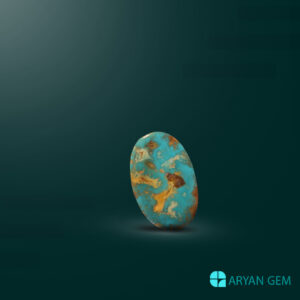
FeatureBest Grade (Aabi)Good Grade (Fine Shajari)Acceptable GradeColorPure, intense Sky BlueVivid Blue with ContrastMedium Blue/Slight Green TintMatrixNone or extremely fine spider-webFine, attractive web/veiningHeavy, distracting blotchesHardness (Mohs)6.0 – 6.55.5 – 6.05.0 – 5.5PorosityVery LowLow to MediumMedium to HighStabilizationNone Required (Natural)Minimal/Optional EnhancementOften Enhanced/Treated
Geological Context of the Mines
The Neyshabur turquoise deposits are situated within the Neyshabur region, characterized by significant tectonic activity related to the collision of the Arabian and Eurasian plates. The turquoise formation is metasomatic, involving the alteration of pre-existing mineral assemblages.
The primary geological sequence involves:
- Hydrothermal Alteration: Hot, acidic, copper-rich fluids moving through fractures in the host andesitic/rhyolitic lavas.
- Mineral Precipitation: Interaction of these fluids with aluminum- and phosphate-bearing country rock (often clay-rich zones) results in the precipitation of turquoise in veins, nodules, and disseminated masses within fissures.
- Limonite Association: The absence of significant iron oxides (limonite) in the immediate vicinity of the deposits is the key reason for the purity of the blue color, as iron strongly favors the green spectrum in turquoise crystallization.
References
- Hughes, R. W. (1997). Ruby & Sapphire: A Gemologist’s Guide. RWH Publishing. (General reference for colored stone formation and market standards, applicable to geological context.)
- Pogue, J. E. (1915). The Turquoise: A Study of Its History, Geology, and Art. National Academy of Sciences. (Classic historical and geological study of major turquoise sources, including Persia.)
- Schumann, W. (2000). Gemstones of the World. Sterling Publishing Co., Inc. (Standard reference for gemstone identification, sources, and chemical properties.)
- Amini, H. (2018). Firoozeh: The Blue Gem of Persia. Journal of Iranian Studies, Vol. 51, No. 3. (Reference covering the cultural and trade history of Neyshabur’s mining activity.)
- Mineralogical Society of America. (Various Publications). Data on Hydrated Copper Aluminum Phosphate Minerals. (Reference for the specific chemical composition and crystal structure of high-quality turquoise.)
- King, R. J. (2004). Turquoise: The Blue-Green Stone of the Ancients. Geoscience Press. (Detailed analysis of source variations and matrix effects.)
- The Gemological Institute of America (GIA) Reports. (Internal case studies on stabilizing and identifying Asian turquoise origins.)


